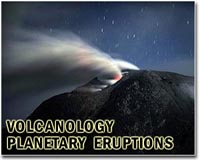| . |  |
. |
Berlin, Germany (SPX) Apr 18, 2011 One year ago, on 14 April 2010, the Icelandic volcano of Eyjafjallajokull erupted and effectively grounded large parts of the air transport sector across Europe. At this time, there was no defined limit for airborne concentrations of ash. Instead, there was just an international guideline stating that flying in regions with increased concentrations of airborne ash should be avoided since the risk of aircraft engines getting damaged by ash particles appeared to be far too great. On 20 April 2010, barely one week after the eruption, the permitted limit was defined as two milligrams of ash per cubic metre, with substantiating documentation to back this up. The measurement flights flown by the Falcon 20E research aircraft operated by the German Aerospace Center contributed greatly towards this outcome. The data collected has now been evaluated; the newly defined limit was never exceeded in the skies above Germany. Thanks to this new limit value and improved model-based forecasts, it will be possible to restrict or even completely avoid the need to impose airspace closures in the wake of any future volcanic eruption. An international team of researchers led by DLR performed the evaluation of the enormous dataset. The researchers also compared the data with other measurements and mathematical models. "We were able to correct the initial estimates of ash concentrations made on 19 April last year: on this date, ash concentrations in the skies above Germany and Holland were below 0.2 milligrams per cubic metre -well below the recently defined limit," explained Ulrich Schumann, Director of the DLR Institute of Atmospheric Physics. "If airspace closures are to be restricted or prevented in future, the ash cloud in the vicinity of the source volcano needs to be analysed quickly, and predictions need to be checked against comprehensive measurements. A combination of aircraft conducting measurement flights, satellites and ground-based remote measuring systems is needed to accomplish this. It is also important for the various measurements, models and flight planning systems to be interconnected in a European information system in the future, and for this to be made available online to the aviation sector."
Ash layers at altitudes of up to seven kilometres "Overall, the volcano is estimated to have ejected close to ten megatons of ash and three megatons of sulphur dioxide," stated Schumann. "We were able to find ash layers at altitudes of up to seven kilometres. They ranged from a few hundred metres to three kilometres in thickness, and were between 100 and 300 kilometres wide." In many respects, the ash cloud closely resembled the dust clouds that form during Sahara sandstorms, which DLR has analysed several times in the past. The Falcon completed a total of eight measurement flights. During its flights over Iceland on 1 and 2 May 2010, the ash concentrations in the centre of the cloud were roughly one milligram per cubic metre. On 19, 20 and 22 April and on 9 May, ash clouds above Germany and over the North Sea and the Baltic Sea exhibited concentrations of less than 0.2 milligrams per cubic metre. On 17 and 18 May, clouds of ash across Holland and Germany had concentrations that may occasionally have exceeded 0.2 milligrams per cubic metre, but certainly never rose to as much as two milligrams per cubic metre.
Implications for air transport The results of the 'ash flights' will now be used internationally to test and improve forecasting models. In the light of these events, the exchange of information between all parties involved must improve substantially. The aviation industry is pressing for the right to take its own operational decisions about flights in the wake of future volcanic eruptions. To make this possible, the necessary risk analysis procedures and relevant information must be available. DLR can certainly make a contribution towards this process with its expert knowledge of the atmosphere and aviation, using its research aircraft, measuring instruments, satellite data and simulation tools. The results now being published by DLR researchers in the scientific journal 'Atmospheric Chemistry and Physics' constitute an important step towards this goal.
Share This Article With Planet Earth
Related Links German Aerospace Center Bringing Order To A World Of Disasters When the Earth Quakes A world of storm and tempest
 Increasing activity at Philippine volcano
Increasing activity at Philippine volcanoManila (AFP) April 16, 2011 More quakes and gas emissions have been detected from a volcano on an island close to the Philippine capital, possibly indicating an eruption is looming, the government said on Saturday. Twenty volcanic quakes were detected at Taal Volcano in the 24 hours to Saturday 8:00am (0000 GMT) compared to 15 quakes in the same period on Friday, indicating that magma is still rising to the surface, th ... read more |
|
| The content herein, unless otherwise known to be public domain, are Copyright 1995-2010 - SpaceDaily. AFP and UPI Wire Stories are copyright Agence France-Presse and United Press International. ESA Portal Reports are copyright European Space Agency. All NASA sourced material is public domain. Additional copyrights may apply in whole or part to other bona fide parties. Advertising does not imply endorsement,agreement or approval of any opinions, statements or information provided by SpaceDaily on any Web page published or hosted by SpaceDaily. Privacy Statement |